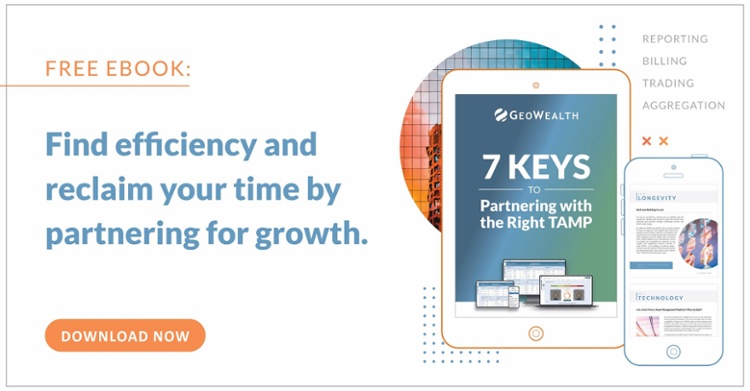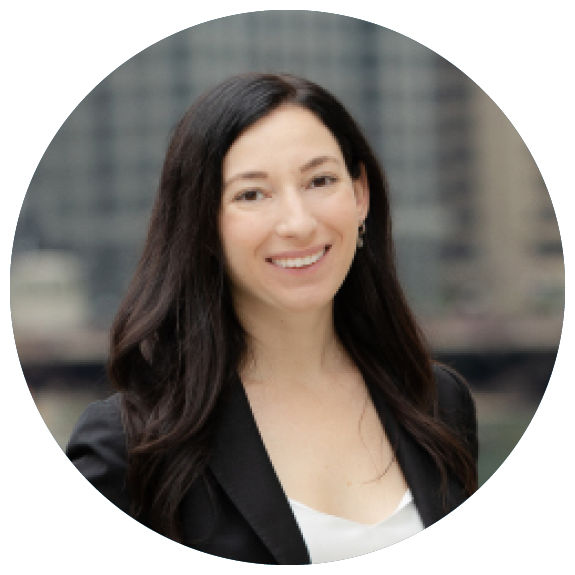
Welcome to the GeoWealth Consultant Series! Each article will highlight a consultant, coach, or organization focused on helping independent advisors improve practice management, accelerate success, and drive growth for their business.
RyTech Digital Marketing
Today, we’re joined by RyTech's Chief Digital Officer, Sam Kessenich. Sam manages an award-winning team of digital marketers that focus on delivering measurable digital results for clients across organic, paid, social, and email marketing strategies. Whether it's supporting a team establishing their online presence for the very first time, or accelerating the growth of an established firm seeking to reach new clients online, RyTech has tools and tactics to make an impact.
Based in Chicago, RyTech's team of creatives and digital marketers help firms keep up with the ever-changing digital landscape, especially when they have limited in-house marketing staff. RyTech offers a broad range of services to help businesses of all sizes capture attention and convert clients digitally, whether it's via SEO, graphic and web design, social media, paid advertising, email marketing or copywriting.

Let’s get to the Q&A!
Q: The financial advisory space can feel crowded. Any advice on standing out from the pack?
Sam: The route we take is two-fold to stand out in any field.
First — talk to your customers, either current or potential. We've been able to gather eye-opening insight by talking about their likes, dislikes, and what triggers them to make decisions. Think about the conversations you have with potential clients - why are they looking for a new advisor? And, what makes you different?
Second — don't be afraid to be yourself to develop your brand. It's easy to copy what your competition is doing or write in industry terms or use a templated approach that a number of other advisors are using, but easy isn't the route to take if you want to stand out. People can sniff out when writing feels forced, and we see over and over again that audiences have an appreciation for authenticity.
Q: If I don’t have marketing staff in-house, what’s the best way to build out my digital footprint? Is it different than how I should approach getting more evergreen document-based tools for my firm?
Sam: My first step would be to identify what's going to have the largest return on investment (ROI) impact and focus on one tactic/strategy at a time. Marketing can feel overwhelming because there's an overwhelming amount of work that can be done. By sequentially identifying the one channel or strategy that can actually impact your business, you can make marketing more bite-sized and focus on optimizing a single channel until it's able to be put on autopilot.
For example, think about the cost of organic traffic to your website as well as the awareness it can bring. Think about what your ideal clients are searching for - "financial advisor near me" or "how should I allocate my retirement portfolio" or other key terms. The more you can answer these questions through your digital footprint, the higher the likelihood you will see a return. A.I. & document-writing tools can be a great addition, expediting some of the work that needs to be done to write net-new content, but will always need someone with financial expertise to not only review, but to add key details that A.I. can't currently write. After all, A.I. and document-based tools, in their current state, are pulling from information that is already written.
Q: What’s the best way to design my website so that I can track engagement or capture new leads?
Sam: Don't overthink your design. Make your website simple to navigate, responsive across all devices (desktop, any mobile phone, tablet), and make sure the content can speak to your target audience in a way they'll be able to digest. And, include a call to action, especially for new clients. What do you want someone who has never been to your website to do - schedule a call, fill out a form, download a financial planning checklist?
Make sure you set your website up with Google Analytics (Universal as well as GA4), Google Search Console and Google Tag Manager (GTM). GTM will allow you to track conversion actions so you can ensure marketing channels are producing a positive ROI. If you are using a CRM, make sure that the forms on your website are integrated so that you can attribute leads and customers to the different strategies being implemented.
Q: I’m intimidated by social media. What are some easy ways to get started? Do I need to do paid ads?
Sam: Don't force social media and don't try to take on every channel. Find a single channel you feel most comfortable with based on your ideal client profile (LinkedIn, Twitter, Facebook, Instagram) and start with that. Instead of aiming to go viral immediately, start by commenting on posts from your current network.
It's important to make this a practice. Block 15 minutes of calendar time to make sure you commit to engaging on social media. If you don't make a normal practice of this, it'll never get done.
You don't need to do Paid Ads if your goal is to grow your network and if you do grow organically, you'll make better connections than if you were to put money towards Paid Ads. If your goal is to quickly get conversions or visits to a website, Paid Ads is more than likely going to be necessary and can range in spend based upon your goals.
Q: What are some marketing trends in financial services that you’re anticipating will take center stage for 2023?
Sam: One of the obvious trends I can't overlook is the integration of AI into marketing, across all industries. Google & Bing are competing to integrate AI into their search engines, but past that, all marketing teams should be identifying how to integrate AI to make their day-to-day lives streamlined, while maintaining a brand voice that stands out and makes them unique.
Please allow me to get a bit more technical in how I further explain here…Specific to the financial sector, I expect to see a larger investment in mid-funnel marketing trends in 2023, especially when the traditional approach has been to target primarily bottom-of-funnel, transactional customers. This means identifying who and where your target market is, as well as who the key decision makers are, before they're ready to make a purchasing decision.
One of the mid-funnel trends I expect to see is an increase in helpful, relevant content, whether they be downloadable checklists, eBooks, webinars, etc. These are written and posted not for the purpose of boosting your SEO (search engine optimization) stats like organic traffic or keyword position, but to increase thought leadership, start conversations, be used across social channels, and ultimately to collect email addresses.
Another trend I'm anticipating is the need for highly segmented email nurture/drip strategies for email marketing. I expect to see the traditional one newsletter per month lose steam, and email marketing teams need to target small groups more specifically. Start segmenting by job title, years of experience, or specific pain points, then putting together highly relevant content to speak to those specific target audiences. The goal will be to stay top of mind for those leads so when they're ready to make a buying decision, you're relevant.
Q: Should I think differently about branding and marketing? How do you foster them each separately or together?
Sam: Branding is internal, marketing is external. What I mean by that is branding is defining who you are as a brand, what your company stands for, and creating a mission statement and logo that go along with that. You then use your branding within your marketing execution.
Marketing is how you present your brand to the world. Everything within your marketing strategy that you implement is guided by your brand, but it's communicating to your target audience.
Q: What are your favorite platforms to use? (Salesforce, HubSpot, etc)
Sam: With the caveat that I'm a multi-channel marketer who chooses platforms based on where my clients target audience is, currently my favorite trio of platforms is LinkedIn, Google Ads and Hubspot.
LinkedIn's B2B targeting and Google's ability to target based on what a user is searching for are extremely powerful platforms for anyone in marketing or advertising. What takes these to the next level though is when you combine Hubspot as a marketing/sales CRM (customer relationship management platform) on top of them. That gives you the ability to determine which channels, campaigns, ads or keywords are driving non-qualified leads and which are driving actual return on investment.
If you would like to learn more about Sam and RyTech, click here!
Read the other editions of our Consultant Series:
- Grier Rubeling of Advisor Transition Services
- Kelly Waltrich of Intention.ly Digital Marketing
- Justin Watkins of Native Digital
- SEE ALL
NOTE: GeoWealth has not been compensated for this communication. This is not an endorsement or testimonial of any product or service. The information provided in this article is intended for general information and educational purposes only.
See GeoWealth's Turnkey Asset Management Platform in action.
Schedule a one-on-one consultation with our team.


